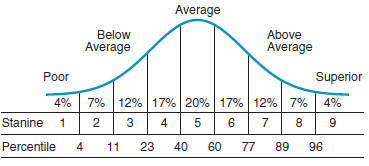The Independent School Entrance Examination, commonly known as the ISEE, is a standardized test designed to assess the academic abilities of students applying for admission to independent schools. These schools, renowned for their rigorous education and specialized programs, often require the ISEE as part of the admission process. The ISEE provides valuable insights into a student's reasoning, math, and language skills, aiding schools in making well-informed admission decisions.
ISEE Structures And Length
The ISEE is divided into several sections, each measuring different aspects of a student's academic capabilities. The test is structured to adapt to the student's skill level, ensuring a tailored assessment experience.
Here's a breakdown of the sections:
- Verbal Reasoning: This section evaluates a student's vocabulary and reading comprehension skills. It includes questions that assess a student's ability to understand context, draw conclusions, and identify synonyms and antonyms.
- Quantitative Reasoning: Testing mathematical aptitude, this section presents mathematical concepts and problem-solving scenarios. It assesses the student's proficiency in arithmetic, algebra, and geometry.
- Reading Comprehension: Students are tested on their reading comprehension skills through various passages followed by questions that require them to analyze the text's content and purpose.
- Math Achievement: Focusing on mathematical application, this section measures the student's grasp of math concepts and their ability to solve problems related to everyday situations.
- Essay: Some levels of the ISEE include an essay section where students are given a prompt and asked to write an organized and well-structured essay expressing their thoughts.
Levels of the ISEE
The ISEE is divided into several levels, each catering to specific grade levels. The levels are:
- Primary Level (grades 2-4): This level is tailored for younger students and assesses their basic skills in verbal and quantitative reasoning.
- Lower Level (grades 5-6): Geared towards students in early middle school, this level includes sections on verbal reasoning, quantitative reasoning, reading comprehension, and math achievement.
- Middle Level (grades 7-8): Designed for students in late middle school, this level covers verbal reasoning, quantitative reasoning, reading comprehension, math achievement, and an essay.
- Upper Level (grades 9-12): This level is for high school students and includes sections similar to the Middle Level.
How is the ISEE Scored?
The ISEE is scored on a scale ranging from 760 to 940, with each section's score contributing to the overall performance. The essay is scored separately and does not affect the main score. It's important to note that the ISEE doesn't use a traditional percentage-based scoring system; instead, it employs a scaled scoring method that takes into account the difficulty of the questions.
The scores are divided into percentiles, indicating how a student's performance compares to that of other students who took the test. For instance, a student in the 75th percentile performed better than 75% of the test takers.
How do you interpret ISEE scores?
The ISEE provides four different scores, one for each section, except for the essay portion of the test, which is evaluated by the school(s) that your child is applying to. The majority of schools take into consideration each separate score as well as the average of the four scores.
Here's how to interpret the scores:
ISEE Raw Score
The ISEE raw score represents the total number of questions a student answers correctly in each section of the test. Unlike some other standardized tests, the ISEE doesn't deduct points for incorrect answers, so it's in a student's best interest to answer every question, even if unsure. The raw score serves as the foundation upon which other scoring metrics are built. Each section has its own raw score, reflecting the student's performance in that specific area.
ISEE Scaled Score
The raw scores are then converted into scaled scores to account for variations in the test's difficulty levels across different versions. This process ensures fairness in comparing scores from various test administrations. Scaled scores for each section range from 440 to 710, with an average score usually set around 500. Scaled scores also help in making comparisons between different levels of the ISEE.
ISEE Percentile Ranking
The percentile rank is a crucial aspect of ISEE scoring. It indicates the percentage of students whose scores fall below a particular student's score. For example, if a student's percentile rank is 85, it means they scored better than 85% of the students who took the same level of the ISEE. This ranking offers a clear picture of how a student's performance stacks up against their peers. Percentile ranks help schools understand where an applicant stands in relation to other applicants.

ISEE Stanine Score
The term "stanine" is derived from "standard nine," and it represents another way to assess a student's performance on the ISEE. Stanine scores range from 1 to 9, with 5 considered average. Stanines group scores into broader categories, making it easier to distinguish between various levels of performance. For instance, scores in stanine ranges 7 to 9 are considered above average to exceptional, while scores in stanine ranges 1 to 3 indicate below-average performance.
ISEE Stanine Analysis
Interpreting stanine scores can provide valuable insights into a student's performance across different sections. A student might excel in one section and have a lower stanine in another, indicating a particular strength or area for improvement.
Schools often consider stanines to assess overall performance and potential in various academic domains. For example, a student with a high stanine in verbal reasoning and a lower stanine in math achievement might be a strong candidate for humanities-focused programs.
In conclusion, the ISEE serves as a vital tool for both students and schools in the admission process for independent schools. By understanding the test's structure, levels, scoring, and score interpretation, students and their families can better prepare for the exam and make informed decisions about their educational journey. Remember, the ISEE is not just about assessment; it's an opportunity for students to showcase their academic potential and pursue their educational aspirations.

What is the ISEE, and why is it important for students?
The ISEE, or Independent School Entrance Examination, is a standardized test used by independent schools for admissions. It assesses students' academic skills and helps schools evaluate applicants' suitability for their programs. Scoring well on the ISEE can enhance a student's chances of gaining admission to their desired independent school.
How is the ISEE structured, and what are the different sections?
The ISEE is divided into several sections: Verbal Reasoning, Quantitative Reasoning, Reading Comprehension, Math Achievement, and an optional Essay. Each section evaluates different skills, from vocabulary and math concepts to reading comprehension and critical thinking.
Can you explain the different levels of the ISEE?
Certainly. The ISEE offers four levels: Primary Level (grades 2-4), Lower Level (grades 5-6), Middle Level (grades 7-8), and Upper Level (grades 9-12). Each level is tailored to the appropriate grade range and includes sections suited to the students' cognitive abilities and academic skills.
How is the ISEE scored, and what do the scores mean?
The ISEE is scored using a scaled scoring method, with scores ranging from 440 to 710 for each section. These scaled scores are then used to calculate percentile ranks, which indicate how a student's performance compares to others. A higher percentile rank reflects better performance. Stanine scores, ranging from 1 to 9, offer a broader assessment of performance, with 5 being average.
What is the significance of percentile ranks and stanine scores?
Percentile ranks provide context by showing where a student's scores stand among their peers. For example, a percentile rank of 80 indicates the student scored higher than 80% of test-takers. Stanine scores categorize performance levels, making it easier to understand a student's strengths and areas for improvement across different sections.

